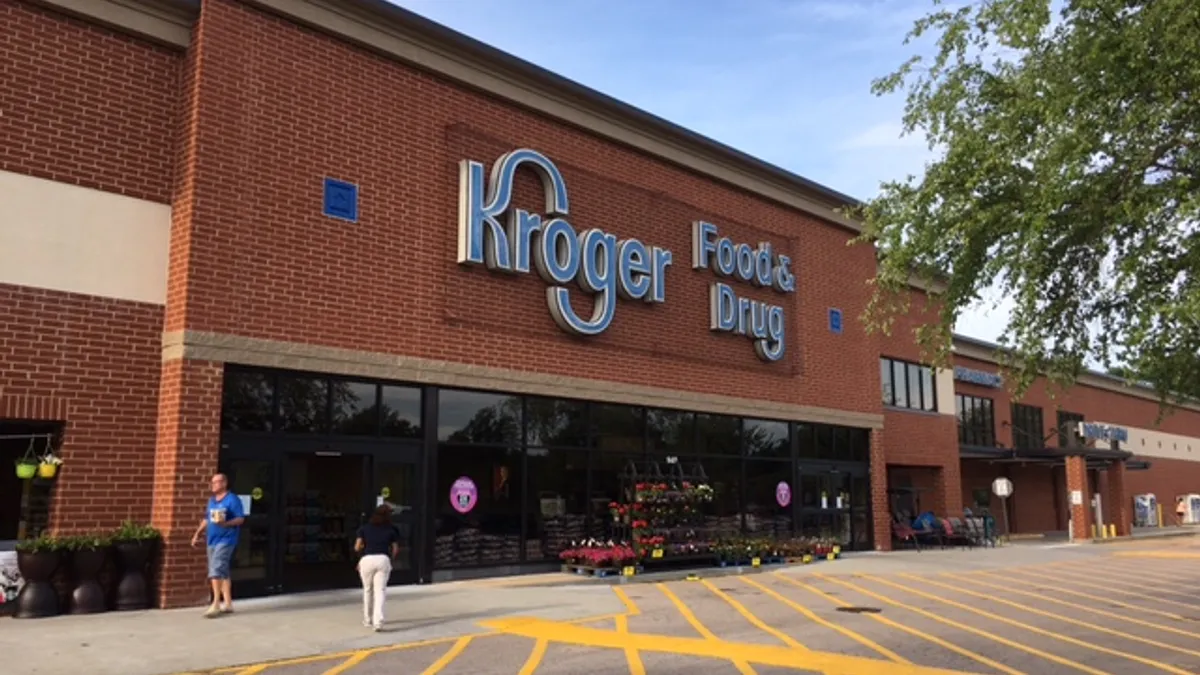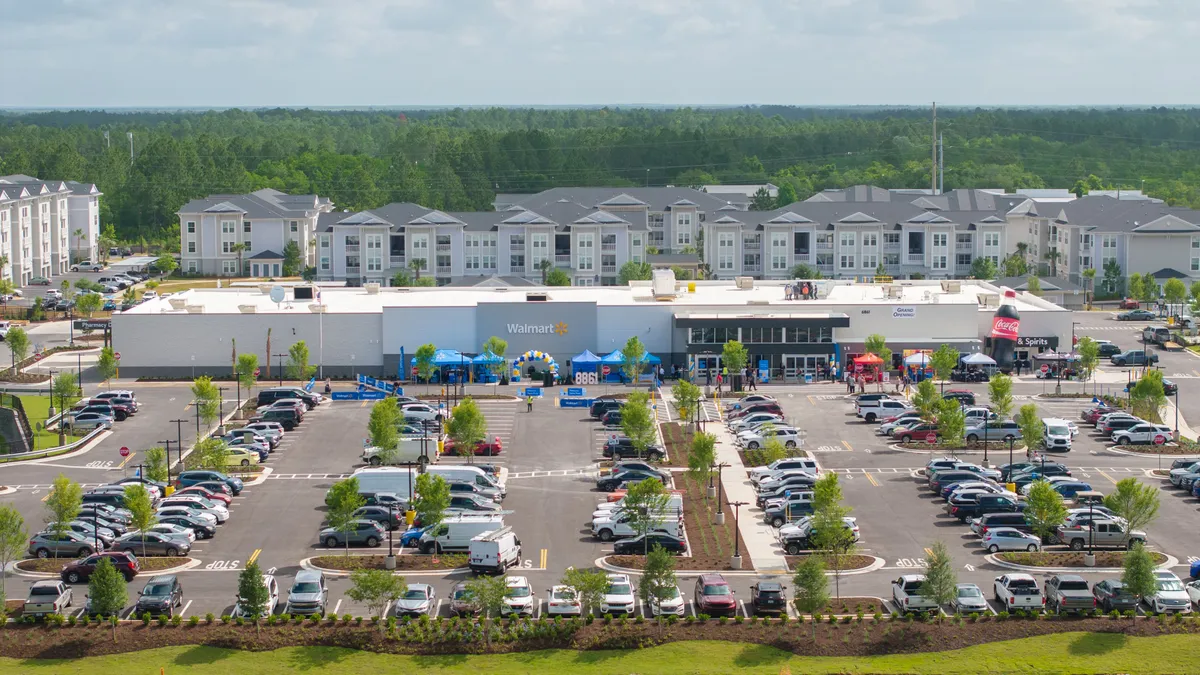Dive Brief:
- Kroger reported earnings of $353 million, or $0.39 per diluted share in its second financial quarter of 2017, according to a company release. This was in line with analysts’ estimates, but down from $383 million in earnings over the same period last year.
- Kroger’s same-store sales increased 0.7%. This beat analysts’ estimates, and signaled the grocers’ return to growth in the all-important metric after two straight quarters of declines.
- The company maintained its earnings forecast of $2 to $2.05 per share. "As our business continues to improve, we remain committed to delivering on our guidance in 2017 and believe we have the ability to grow identical supermarket sales and market share in 2018,” Kroger CEO Rodney McMullen said in a statement.
Dive Insight:
These results appear underwhelming for a grocer that has consistently outperformed the market in recent years. But when considered in context with the competitive grocery environment Kroger is facing, these numbers are fairly encouraging for its long-term growth prospects.
The retailer’s profits, for one, fell 7% in this second financial quarter compared to the same period last year — mainly due to price cuts the company has instituted throughout its stores. That sent Kroger’s stock tumbling 8% in early trading this morning. However, while painful, these cuts have helped the grocer grow its market share in a very competitive environment, and are seen by analysts as a necessary step.
Likewise, a 0.7% increase in same-store sales may not seem like much, but for Kroger it signals a return to growth in the metric after two consecutive quarters of declines. Prior to the fourth-quarter results delivered earlier this year, Kroger had posted same-store sales growth for 52 straight quarters.
Kroger maintained its financial outlook for the year, established last quarter when it downgraded earnings-per-share estimates from a $2.21 to $2.25 range to a $2 to $2.05 range. But few analysts expected the company to upgrade its outlook, and some even wondered if Kroger would downgrade its forecast further.
Kroger’s stock price has tumbled 35% on the year in the wake of Amazon’s Whole Foods acquisition and the rise of discounters Aldi and Lidl — among other factors — and currently sits at around $23 per share. The company remains focused on the long-term, and specifically on innovation, digital growth and utilizing its superior customer analytics systems. Digital revenue increased 126% in the quarter, largely through the growth of its ClickList e-commerce platform, now available at hundreds of company stores.
Will Kroger eventually soar again? An intensely price competitive market doesn’t do it any favors, and could continue to cut into profits along with rising labor and healthcare costs. But many agree the retailer is doing everything it can, and that it has the resources to compete better than most other conventional grocers.
“Kroger is in a much better position to weather this storm than many other players,” Neil Saunders, managing director of GlobalData, wrote in a note this morning. “Its size and scale afford the company much more flexibility on pricing and provide more scope for cost savings elsewhere in the business to offset such reductions."
Moody's Vice President Mickey Chadha felt similarly.
"We expect the pricing environment to remain very competitive in 2017 as value discounters like ALDI expand, players like Lidl enter the market, Walmart flexes its pricing muscle and Amazon continues to lower pricing at Whole Foods," Chadha said in a note this morning. "This will result in Kroger's profitability to remain pressured in the second half of the of the fiscal year, however Kroger’s scale, diverse store base, high private label penetration and strong execution ability is a distinct competitive advantage.”










